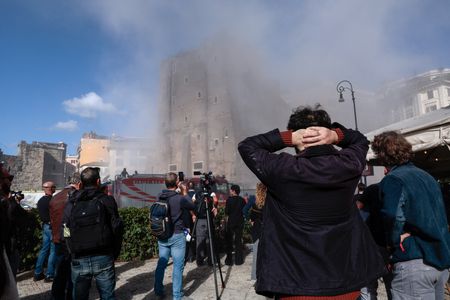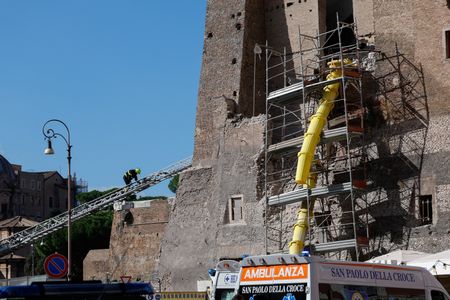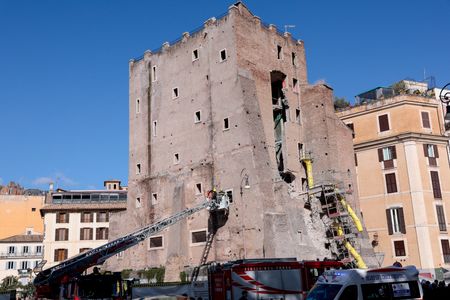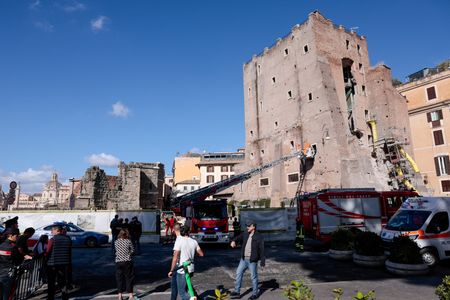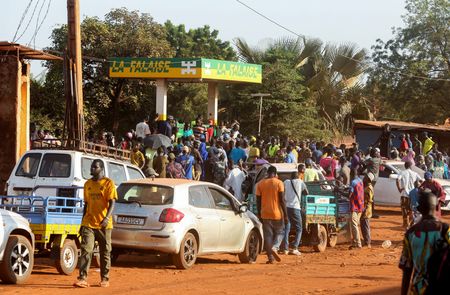ROME (Reuters) -A Romanian worker who was trapped for hours under rubble in Rome on Monday following the partial collapse of a medieval tower near the Colosseum has been rescued by emergency services, local authorities said.
“He has been pulled out and taken to hospital by ambulance,” Rome police chief Lamberto Giannini told state television station Rai, adding that the man was in “a serious condition.”
Parts of the 29-metre (95 ft) Torre dei Conti crashed to the ground on at least two occasions, videos posted on social media and Reuters footage showed. The first took place at around 1030 GMT, the second about 90 minutes later.
Clouds of dust came billowing out of the windows, along with the sound of collapsing masonry. The second incident took place while firefighters were working on the structure with aerial ladders.
None of the firefighters were injured.
LONG AND DIFFICULT RESCUE
“The rescue operation took a long time because every time a part of the worker’s body was freed, further collapses occurred, burying him again under the rubble,” Giannini said.
A second worker, also Romanian, was pulled out almost immediately and hospitalised with serious but not life-threatening head injuries, while two more workers suffered minor injuries and declined hospital treatment.
TOWER BUILT BY 13TH CENTURY POPE
The tower, which was due to be converted into a museum and conference space, is located halfway along the Via dei Fori Imperiali, the broad avenue that leads from central Piazza Venezia to the Colosseum.
The building was still standing, but showing significant internal damage.
It once hosted city hall offices but has not been in use since 2006 and was being worked on as part of a four-year renovation project due to end next year, according to Rome city authorities.
Due to the EU-funded restoration work, the area around the tower was closed off to pedestrians.
The building was erected by Pope Innocent III for his family in the early 13th century, and was originally twice as high, but was scaled down after damage from earthquakes in the 14th and 17th centuries.
(Reporting by Angelo Amante, additional reporting by Alan Charlish in Warsaw, Sara Rossi in Milan, writing by Alvise Armellini and Sara Rossi, editing by Keith Weir and Gavin Jones)


